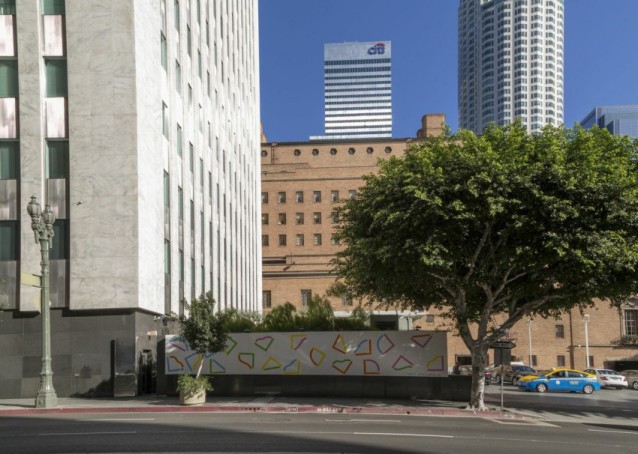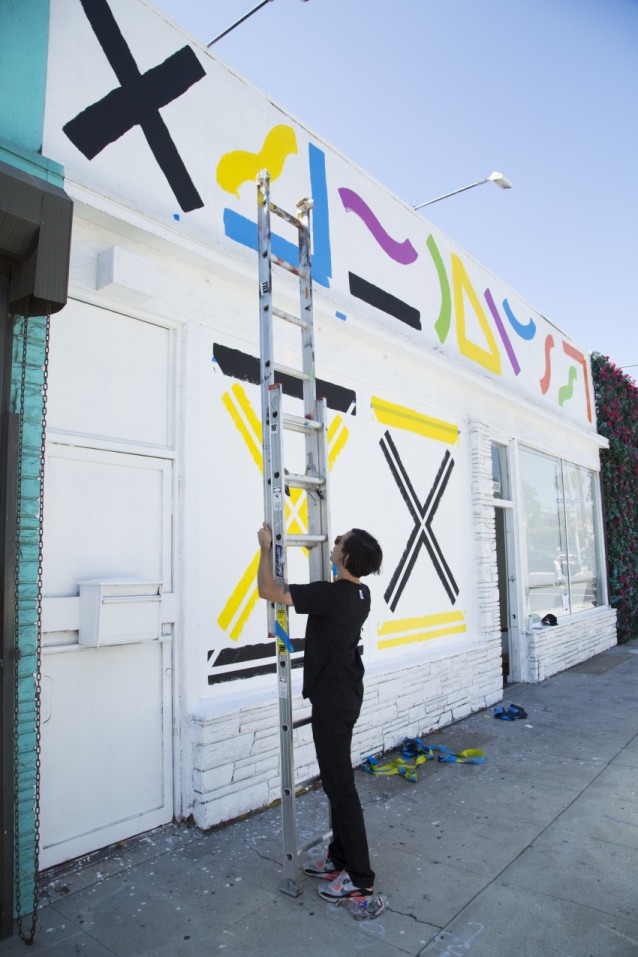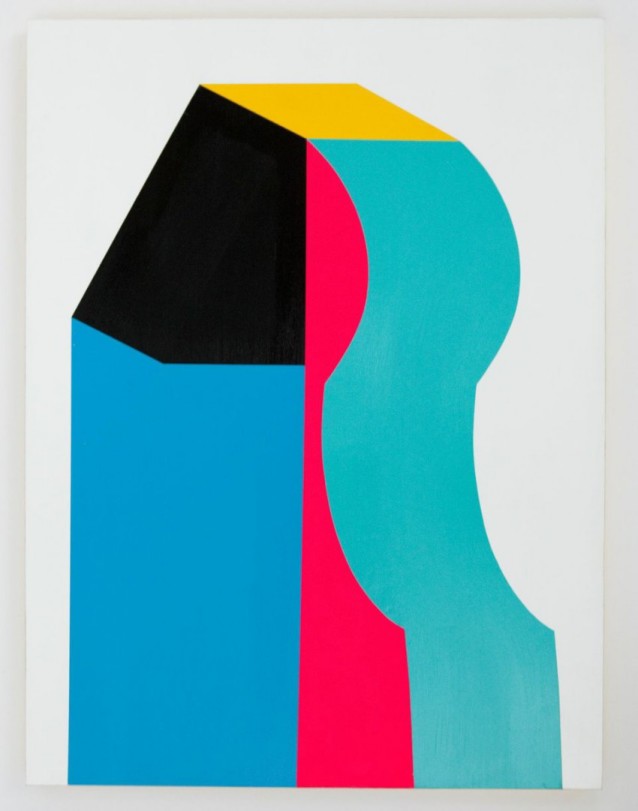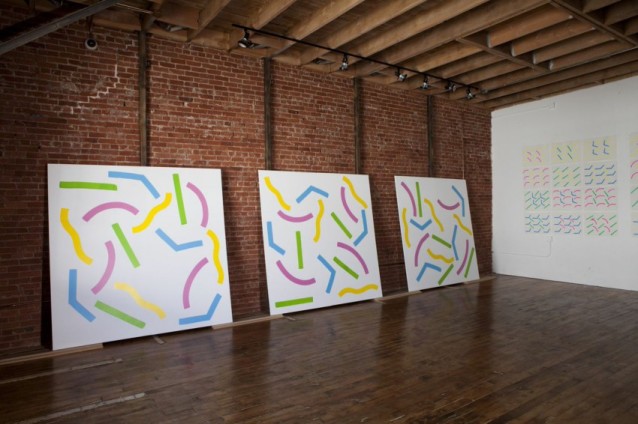Interview with Erin D. Garcia from Monster Children
Aaron Farley sat down with California artist Erin Garcia to ask about his creative evolution, and his new exhibition, 5 Shapes In 6 Colors, which runs Aug 16th – September 14th. You’ve still got plenty of time to go check it out at HVW8 Gallery, 611 N. Spaulding, Los Angeles. Do yourself a favor and hop to it.
Interview and photography by Aaron Farley
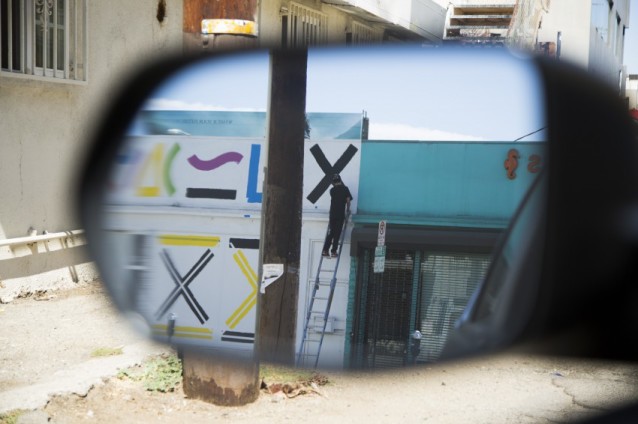
AF: Talk us through the progression of murals that you’ve done.
EG: I think the first one was the standard vertical gallery, and the piece I did for the solo show at This Gallery, and then East of Western, and then The Ace, (Palm Springs), which was a huge leap.
Why was it a huge leap?
It was a huge leap because 1) it was multiple colors, and then 2) because it was massive. It was 50 feet by 2 stories. So before that the one at East of Western was the largest and that was 10 x 8 ft.
What was so difficult about it?
It was difficult trying to figure out how to do work on that scale. So when I got there I wasn’t completely sure how I was gonna make it happen. But within the first day I kind of figured out the process for it. And that’s that one where I just used 2 inch painters tape to kind of sketch it with and then I’d paint over the tape, rip it up and fill it all in.
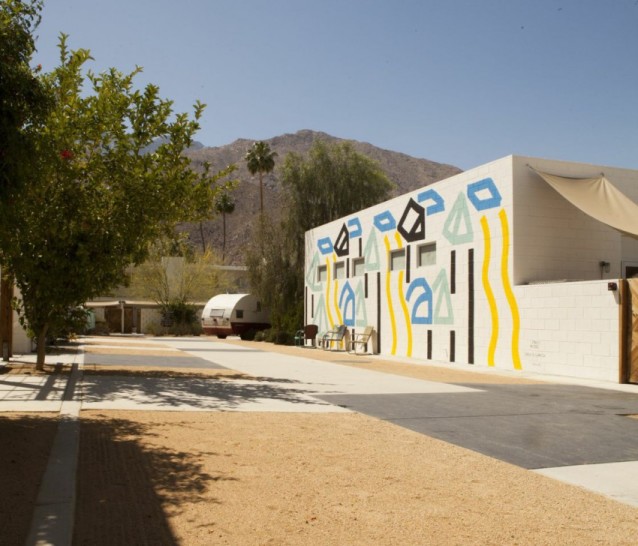
And that’s what you do now?
That’s what I do for – it depends what kind of piece I’m doing – usually I can do it with a 9 inch roller – so that’s what I’m using here at HVW8.
Explain going from your ‘stacks’ (series) to now, where everything’s super flat – because I feel like there was a 3 dimensionality obviously to the stacks, even though it was very flat. These new pieces seem more like patterns to me than objects.
Yeah, well its kind of like several ideas shoot off that one idea. You kind of go from these stacks which were, you know, shapes, drawn on top of each other and arranged, and then when you go to the ace, I start pulling those pieces apart, so you start seeing where a pyramid would intersect with a rectangle, you would see the pieces kind of pulled out a little bit. And so from there I thought since I’m breaking it up I may as well see how far I can break it up while still maintaining the identity of whatever the shapes are. So that’s when I started getting into the elements pieces so then you’d get a right angle that would basically embody the idea of what the square would have been, and then different types of curves. So once I broke them apart I was figuring different ways that I could start using those and arranging them, so that’s where you kind of get the ace pieces, and the RVCA piece which was right after the ace, and that’s when I first started playing with this idea of what to do with these elements. So from the elements work – a whole different bunch of ideas come from there just as far as how I was going to categorize shapes, how I was going to identify them – if it was going to be by color, if it was going to be by type, and that’s when I started to get into lots of repetition. So from there I was like what’s the foundation of what I’m doing? It’s defining these elements by color, and then arranging them. So the new paintings are taking ideas of the elements pieces and just using again kind of larger flat shapes. So it’s defining their relationships by color.

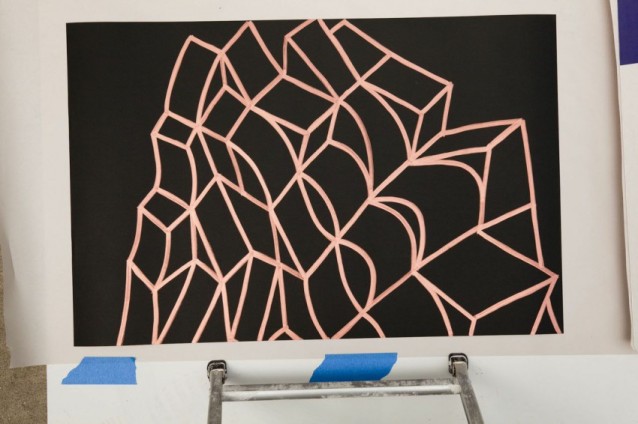
Getting more simplified and complex at the same time.
I think for me when I started doing the element pieces I didn’t just want to draw these shapes everywhere, I wanted them to be ruled by something, and so that’s when I started working with these rule sets. With the rule sets, its like you start with the permutations like here’s 4 colors, we’re going to do every single variation of those four colors but within that there’s also three elements and so its every single variation possible using 4 colors with three elements. I’m kind of on this other side now we’re I’m still working within rule sets but I’m also trying to put in a certain amount of subjective reasoning so they’re left a little more open ended.
Give an example.
Well like this show, its 5 shapes and 6 colors, and so you have more colors than you have shapes. So that means every single shape can’t just be defined by a color. It can be all triangles or black – it would be some triangles or black except for these ones because to complete the rule set you have to have a 6th color in there.
Is there a hope that at some point, you’ll be able to just draw without the rules?
I mean I do that loosely now – I don’t always sit down and write out a concept and draw the concept – I’ll draw something and then I’ll look at it and decide what I think is important about it and what’s holding it together, and then from there I’ll be like “oh, so this is what it is, if I change this one piece then these are the rules that are holding it together. It’s a funny thing, working with such simple shapes and elements – I don’t want it to be something that’s completely free form, because it doesn’t make as much sense to me, unless the work becomes about something else.
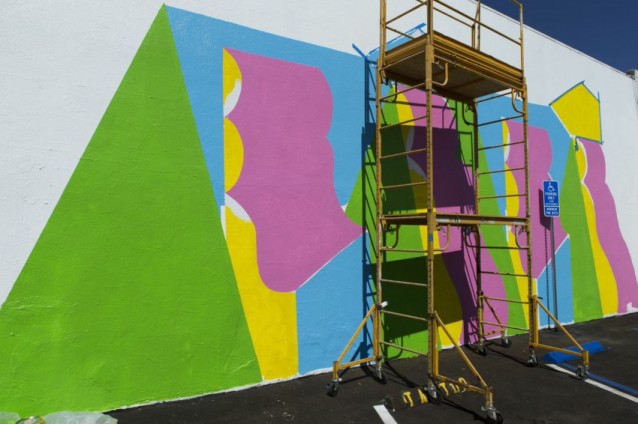
Do you feel like it takes-because it’s so simple-that it takes a bit of explaining?
I try to frame it in a way where you can look at it in any way that you’re interested in. The colors that I use, they have a certain type of emotive response, and a certain type of nostalgic response, and the reason is that 1) I’m drawn to these colors and 2) is that you can look at them and you have this entry point into enjoying the pieces. So if you look at it and you’re like these are a bunch of bright lines and they make me feel happy, that’s totally rad. If you want to look at it a little further and you start understanding what’s kind of holding it together than that’s rad, too. So as far as explaining my work, the base level is I draw arrangements of shapes.
With all the different areas you work in, what makes you choose which style to use where?
The elements pieces work really well at a large scale, they use a lot of negative space and unless I want the rotation of the elements to be a part of the piece, they don’t have to be, and so they just work really well for different projects. So when I started doing these full plain shapes, their place to live is on a perfect surface. And they’re very time consuming to make, as far as having all the edges meet up. So each one kind of has its own world that it lives in well and that it works well on. In the same way, I sat down to do paintings for the elements which I haven’t done yet, like proper paintings, and I was finding it really hard to get configurations that I enjoyed, or the ideas that I wanted to use. For some reason they didn’t make much sense to me as painting on 18×24 panels.
